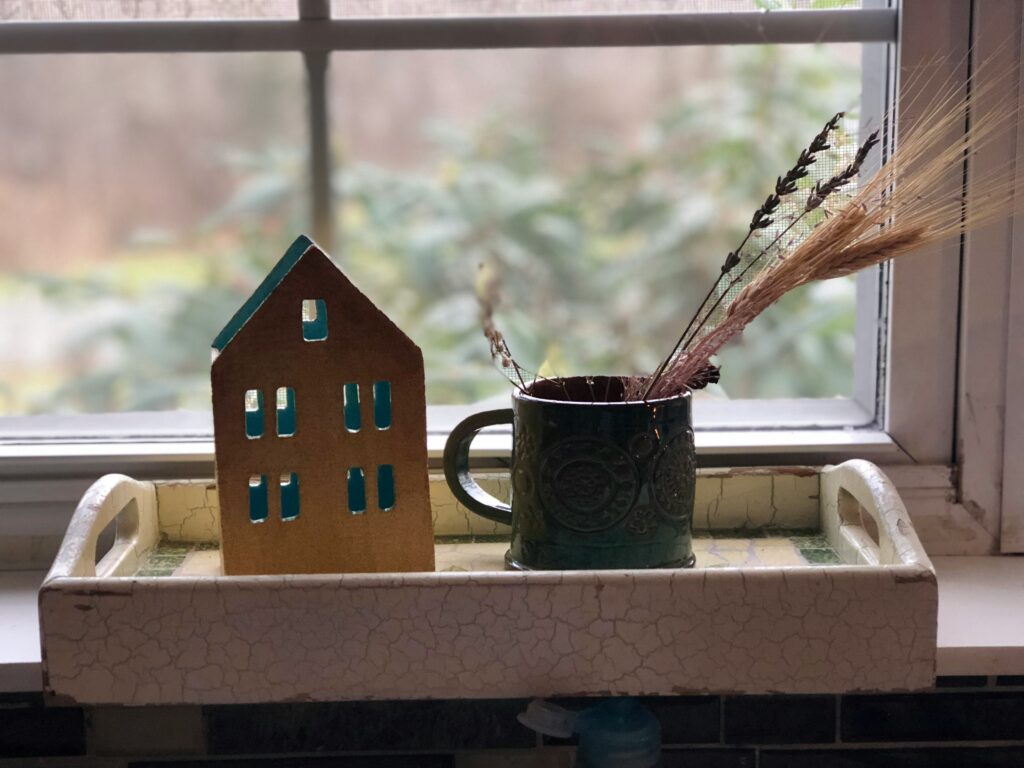Why Renovation Stress Happens
Home renovations often start with excitement and a Pinterest board—but without a hard plan, things go sideways fast. The most common traps? A vague project scope, muddy budgeting, and unrealistic timelines. If you don’t define what you’re actually trying to do or how much you’re really willing to spend, you’ll end up with ballooning costs and half-finished spaces you didn’t mean to build.
Then there’s the mental side. Living in a construction zone takes a toll—dust in your socks, strangers in your kitchen, noise at odd hours. The uncertainty adds up: Where do we eat tonight? Where’s the shower curtain? Why is the dog eating drywall? It wears people down.
But here’s the truth: about 80% of renovation chaos can be avoided with proper planning. Clear scope. Real budgets. Solid timelines. When you map it out before the first hammer swings, you give yourself the breathing room to handle what will go wrong later, without losing your mind—or your money.
Step 1: Define Your “Why” and Scope
Before you pick up a hammer or choose a tile pattern, it’s critical to establish the foundation of your renovation: your motivation. Knowing your “why” helps guide every decision, from design to budget.
Clarify Your Core Goals
Start by answering these questions:
– Are you optimizing space for functionality or style?
– Is this renovation to improve resale value or long-term comfort?
– Are you solving specific problems (like outdated plumbing) or pursuing a dream design?
Having a clear renovation goal will help you avoid scope creep and prioritize what really matters.
Separate Needs from Wants
All homes have room for improvement, but not all upgrades are immediately necessary. Break your list into two categories:
Essentials:
– Structural repairs
– Electrical or plumbing updates
– New roofing or insulation
Nice-to-Haves:
– Custom lighting fixtures
– High-end finishes
– Decorative features
Understanding this distinction will help you compromise with confidence when your budget eventually forces some tough calls.
Visualize Your Vision
Ideas become actionable when they’re visible. Use these tools to bring your renovation goals into focus:
– Mood boards: Collect textures, colors, and references to define a visual direction.
– Sample swatches: Paint chips, tile samples, and flooring cutouts help narrow choices.
– Sketches or digital apps: Tools like Floorplanner or SketchUp can map out layout changes before work begins.
Capturing your vision early not only helps align contractors and designers—it reduces last-minute uncertainty, which is often where stress creeps in.
Step 2: Build a Realistic Budget
Too many renovations crash because the budget only covers what you see at the store—tile, paint, new fixtures. That’s just the start. The bigger numbers live in labor, professional fees, permits, and the curveballs your house throws mid-project. Your walls and wiring don’t care about your spreadsheet.
Here’s a hard truth: surprises cost money. Pipes are older than you thought. Permits take longer. A supply backorder means a last-minute change. That’s where the 20% rule comes in. Take your total budget and tack on at least 20% as a buffer. If you don’t need it, great. But if you do, you’re not scrambling halfway through.
When funds are tight, spend where it counts. Structural issues and core systems always come first—think plumbing, electric, any damage under the surface. Cosmetic upgrades can wait or get scaled down. Keep your must-haves solid, and let the frills follow later. Budgeting isn’t just numbers—it’s what holds your whole project together when things get wobbly.
Step 3: Find the Right People
Hiring the right team can make or break your renovation. Start by asking people you trust—friends, neighbors, or local forums—for recommendations. Don’t skip the reference check. Talk to past clients directly. Did they show up when they said they would? Did they finish the job on time and within budget? One solid conversation can tell you more than a slick portfolio.
When reviewing contracts, be alert. Vague timelines, open-ended costs, or missing warranty terms are red flags. A good contract clearly spells out scope, payment terms, materials, and dispute resolution steps. If it looks rushed or confusing, it probably is. Run it past a legal pro if needed.
And about pricing—don’t chase the lowest bid. Rock-bottom numbers often mean cutting corners, using cheap materials, or disappearing mid-job. Competitive is good. Desperate is not. Go with the team that offers clarity, professionalism, and a plan you can follow. Peace of mind is worth paying for.
Step 4: Create a Phased Timeline
Renovations fall apart when you try to do everything at once. Breaking things into stages is your safety net. Start with the non-negotiables—electrical, plumbing, structural work. Then flow into finishes, fixtures, and styling. This helps keep your space livable and your sanity intact.
Timing matters. Don’t redo your kitchen the same week school starts or your in-laws are visiting. Map project phases around life events and seasonal slowdowns. Winter might be fine for indoor updates, but repainting your exterior in January? Not so smart.
Then there’s the team. Whether it’s a general contractor or a few specialists, make sure everyone knows the schedule—and where their piece fits. This avoids overlap, confusion, and the dreaded “Who’s doing what again?” Weekly check-ins or a shared timeline doc go a long way. Clear timelines aren’t just polite—they’re smart project management.
Step 5: Prep Your Living Space
Renovating your home doesn’t mean your day-to-day life should grind to a halt. Preparing ahead can reduce stress and keep your household functioning—even in the middle of demo dust and paint fumes. Here’s how to maintain comfort and sanity during ongoing construction.
Set Up Smarter Temporary Spaces
If your renovation affects vital areas like the kitchen or bathroom, you’ll need make-do solutions that work for everyday use:
– Temporary Kitchens:
– Relocate small appliances (microwave, toaster oven, portable cooktop) to a corner of a spare room or basement
– Use plastic bins to organize pantry essentials and utensils
– Consider using paper goods temporarily to minimize dishwashing
– Temporary Bathroom Tricks:
– Set up access to a second bathroom or install a portable shower if needed
– Stock essentials in portable caddies for easy movement between rooms
Rearrange Strategically
Shifting furniture and organizing smartly can prevent daily bottlenecks and hazards:
– Move and cover furniture to protect it from dust and scratches
– Keep walkways clear to maintain safety and movement around construction zones
– Create “quiet corners” for work, study, or rest away from the noise
Maintaining Comfort in Multi-Room Projects
When tackling more than one space at once, comfort can quickly unravel. To stay grounded:
– Designate one untouched room as a retreat zone
– Use noise-canceling headphones or white noise machines to cut down on the stress of ongoing work
– Stick to your normal routines as much as possible
When Should You Consider Moving Out?
Sometimes, the best move is literally moving out—temporarily. Here’s when it makes sense:
– You’re renovating multiple core living areas at once (e.g., kitchen and main bath)
– The project timeline is lengthy (6+ weeks) with limited livable space
– There are safety concerns for kids, pets, or individuals with health conditions
– You work from home and can’t afford prolonged noise and disruption
Tip: Be honest with yourself about what you can realistically tolerate—and know that stepping away for a short while may be worth the cost.
Comfort during renovations is possible, but it takes smart setup, honest expectations, and a few adjustments to maintain balance while your dream space takes shape.
Step 6: Stay Flexible but Firm
Renovations don’t care about your schedule. Pipes leak, tiles arrive in the wrong color, and someone always forgets to double-check the measurements. The key here isn’t control—it’s control in motion. Quick decisions matter, because delays cost money. Do your homework upfront so you can act fast when something goes sideways. If you’ve already picked a backup faucet or paint color, you won’t need to agonize when Plan A falls through.
You’ll also need to know when to pivot. Not everything is worth fighting for. If the custom backsplash is delayed by eight weeks, what’s the impact on your bigger timeline? Sometimes it’s smarter to swap it out and move on. Stick to what matters, let go of the rest.
Calm isn’t a luxury—it’s a strategy. Take five-minute breaks when needed, write things down instead of going in circles in your head, and don’t make a call when you’re hungry or tired. A clear head beats a perfect plan, every time.
Bonus: Time-Saving Weekend Projects
Not ready to tear down walls just yet? Start small. Weekend DIYs can sharpen your skills, boost confidence, and give your space a fast lift. Simple tiling jobs—like a kitchen backsplash or bathroom accent wall—require focus but don’t demand pro-level tools. Fixtures are another smart win. Swapping out dated faucets, cabinet handles, or light fixtures can change a room’s feel without touching the layout.
Looking for curb appeal? Refresh your front entry with a new coat of paint, updated house numbers, or a fresh outdoor light. These are the kinds of upgrades that won’t break your time bank—or your actual bank.
Need inspiration? Check out this guide for quick weekend projects to boost your home.
Wrap-Up: Renovation Without Regret
Let’s clear something up: no amount of planning will make your renovation stress-free. But smart planning trims the chaos down to size. When you know what’s happening, who’s doing it, and when to expect the mess, everything becomes more manageable.
Staying organized isn’t just about folders and spreadsheets. It’s about reducing surprises. Communicating clearly with your team, tracking your budget week by week, and keeping your end goals in sight—that’s how you avoid spinning out.
And when the fifth delivery gets delayed or the tile guy flakes? Take a breath. Trust your gut when something feels off, but trust your plan more. A solid roadmap helps you make decisions faster and with less panic.
In the end, the payoff is real. You’re not just renovating a space. You’re building it with intention—and that starts long before the first wall gets knocked down.


 Home & Interior Design Specialist
Home & Interior Design Specialist
